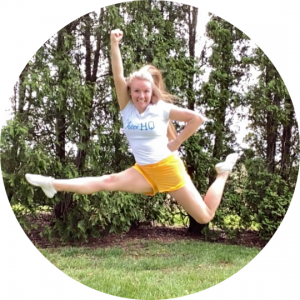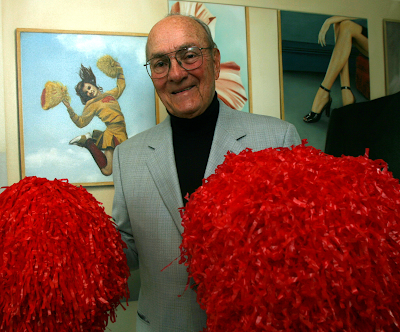Lawrence Herkimer (October 14, 1925 - July 1, 2015) contributed more than anyone to elevating cheerleading into an art, a science, an Olympic sport, and a multi-million dollar industry.
Lawrence Herkimer passed away a decade ago in Dallas due to heart failure at the age of 89. His passing served as a poignant reminder of the profound legacy he left in shaping American culture.
If a mural were to be created for the United States of America, it could include a small section depicting a cheerleader performing the iconic "herkie jump," a move invented by Lawrence Herkimer. It would serve as an emblem embodying the American spirit, defined by leadership, strength of character, youthful enthusiasm, beauty, discipline, cooperation, and sportsmanship.
Herkimer has justifiably earned the nickname "Mr. Cheerleader," as he is widely acknowledged as the father of modern cheerleading. He elevated the standard, transforming a collegiate pastime into a professional sport and a makeshift operation he began in his garage into a network of companies generating $55 million annually.
A gymnast and cheerleader, Herkimer graduated in 1948 from the University of Illinois, where he earned a master's degree after pursuing studies in physical education at Southern Methodist University in Dallas. That same year, he founded the National Cheerleaders Association (NCA), with which he served as a teacher.
He went on to establish the first cheerleading camps across the United States and in several other countries. He is credited with training approximately three million cheerleaders.
He and his wife, Dorothy, were remarkable pioneers. In 1951, they established the Cheerleader Supply Company. Initially operating from the Herkimers' Dallas garage, the company rapidly expanded into a thriving retail business specializing in sweaters, skirts, booster ribbons, custom-made shoes, and various cheerleading equipment.
Herkimer patented the spirit stick and introduced a revised version of the pompom, renaming it "pompon" after realizing that "pompom" carried an obscene connotation in certain Asian languages.
The advent of color television prompted Lawrence's innovation of the pompom. Cheerleaders were gaining increasing camera attention, and Herkimer identified the need to offer vibrant and visually appealing accessories for them. Consequently, he attached paper streamers to a stick to invent the "pom-pom".
For his subsequent design update, a flameproof Mylar version featuring a hidden handle, Herkimer was awarded U.S. Patent No. 3,560,313 by the Patent Office in 1971.
It was a frenzy. Pompon sales surged dramatically, as cheerleaders nationwide sought to acquire their own. Herkimer successfully sold millions upon millions of them. In addition to being an exceptional innovator and an esteemed trainer, he achieved great success as a wealthy entrepreneur— a quintessential example of the true American self-made man. In 1986, when Herkie sold his training camp business (not his other assets), he pocketed the staggering sum of 20 million dollars.
At the NCA, celebrating both attitude and athletics was integral to Herkimer's philosophy. «The physical skills we teach the kids are just a part of it,» he said in a 1983 UPI interview. «We also teach how to build school spirit, we teach crowd control, we teach crowd psychology, we teach them what to do when a crowd boos, we teach how to plan a pep rally.»
Although his hometown was the birthplace of the renowned Dallas Cowboys Cheerleaders, one of the most flamboyant squads in professional sports, Lawrence Herkimer was not an avid admirer. He stated, around 1972, that "professional cheerleaders are not cheerleaders; they are dancing girls and entertainers."
In 1987, Herkimer stated to the Dallas Morning News that he had elevated cheerleading «from the raccoon coat and megaphone to greater heights."»
When he died, (July 1, 2015), in honor of him, cheerleaders and would-be cheerleaders lighted up social media with photos of themselves doing the "Herkie Jump".
«Lawrence Herkimer was a wonderful guy and an SMU legend,» said Brad Cheves, Southern Methodist University vice president for Development and External Affairs. «He was very proud of his association with his alma mater, and very generous to the University throughout his lifetime in ways that directly impacted students. We will cherish his memory.»
It is worth noting that, during World War II, he served in the United States Navy aboard the USS Jamestown for two years in the Philippines. He was awarded the American Campaign Medal, Victory Medal, Asiatic-Pacific Medal, and Philippine Liberation Campaign Ribbon in recognition of his service.
🎖🎖🎖
Cheerleaders worldwide, along with their parents and fans, will always remember Mr. Cheerleader and his enduring legacy to the American people, a true national treasure.






















